This post may contain affiliate links. Please read our full disclosure policy here.
Let me just start by saying this… your starter is very hard to kill. Though possible. You might wondering, well did my sourdough starter go bad then? Let’s figure it out together.
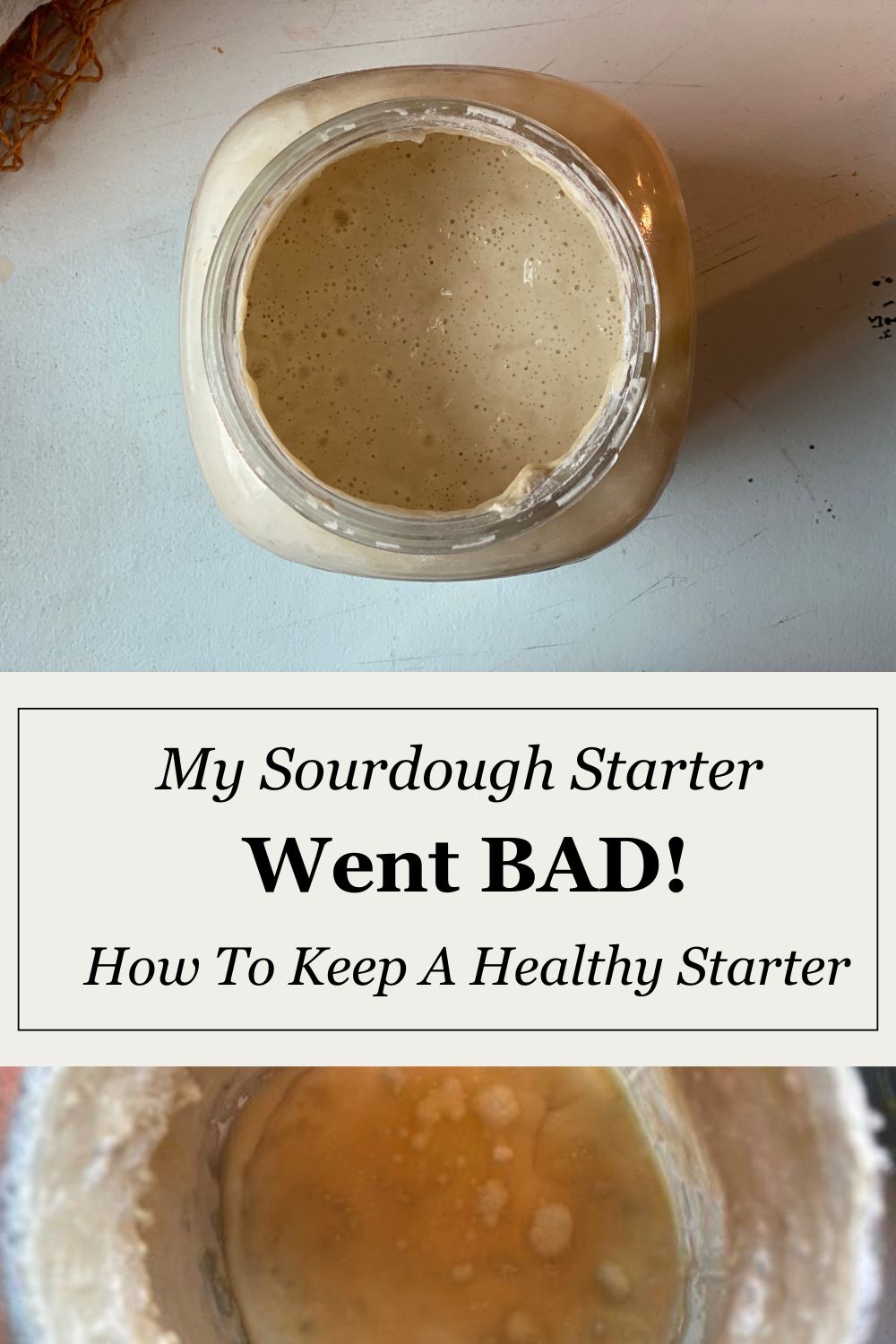
I began exploring the world of sourdough before the world took a flop in 2020. You could say I decided to return to the ol’ traditional ways. And I had to learn things the hard way… before the internet had all the answers on the topic of sourdough!
Sharing my favorite sourdough recipes with friends and family has led to soooo many questions about weird situations (and smells) with their starters in particular. The strangest conversations have formed around strange smells, molds and textures.
People were usually relieved when I said, “I thought my sourdough starter went bad, too! But it didn’t!”
Over the years I’ve learned that nail polish remover smells, black liquid, pink streaks and visible mold in my sourdough starter didn’t necessarily mean I had a bad sourdough starter. These “symptoms” were all trying to communicate a need to me.
It’s my turn to share with you all everything I have found helpful and learned during this sourdough journey.
NOTE: If you have an unanswered question, leave it in the comment section! I’ll be sure to address it next.

WHAT IS A SOURDOUGH STARTER?
Sourdough starter consists of a symbiotic relationship between yeasts and lactic acid bacteria (LAB); fed regularly in a fermentation process of water and flour combined.
Basically, your starter is full of living creatures that need to be fed on a daily basis at room temperature or they become “hangry”.
WHAT YEAST IS IN MY SOURDOUGH STARTER?
Your starter is full of microbes that are creating a thriving ecosystem through a mixed type of fermentation.
The yeast colony in your sourdough starter creates all those beautiful little bubbles you see in an active starter. They metabolize sugars and carbohydrates into alcohol. They’re also the reason your loaves are even able to be preserved.
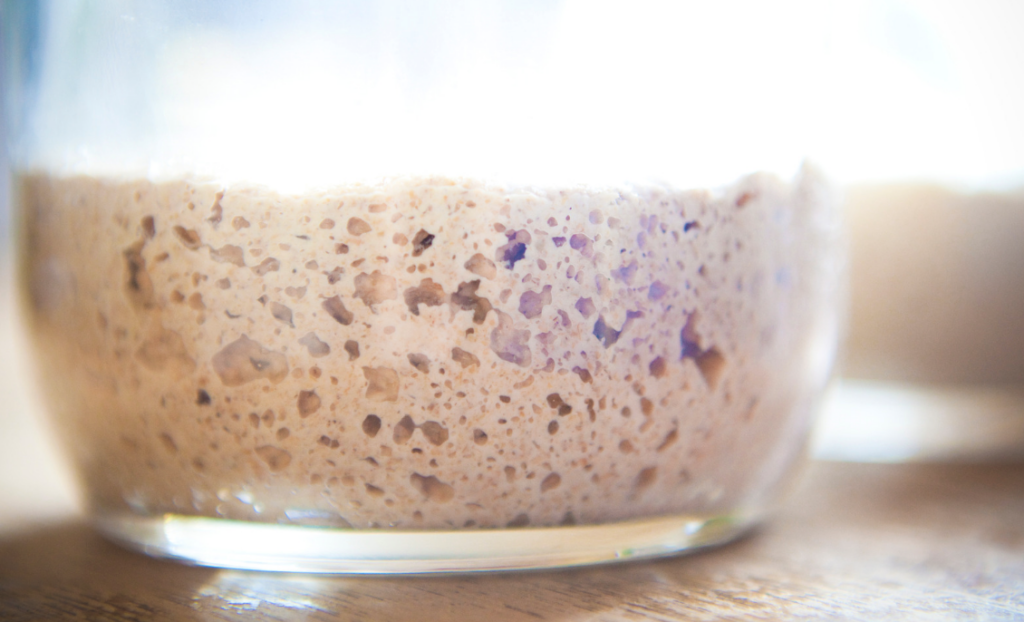
Microbial fermentation happens in your sourdough starter when both the wild yeast and bacteria interact.
WHAT BACTERIA IS IN MY SOURDOUGH STARTER?
Lactic acid bacteria (LAB) are the living organisms that consume the sugars, alcohol and starches in the starter, producing an acidic environment that keeps undesirable bacteria from developing (mold). They contribute to the gluten structure of your bread as well as the so-desired “sour” flavor of your latest artisan loaf.
The primary species of LAB in your starter are called Lactobacillus sanfranciscensis and Lactobacillus brevis.
Because of the naturally strong ecosystem you’ve created, there’s also potential for strange and unusual results in the environment. This can happen because of small mistakes you might be making!
One of the most common mistakes I see made across the sourdough community is underfeeding your sourdough.
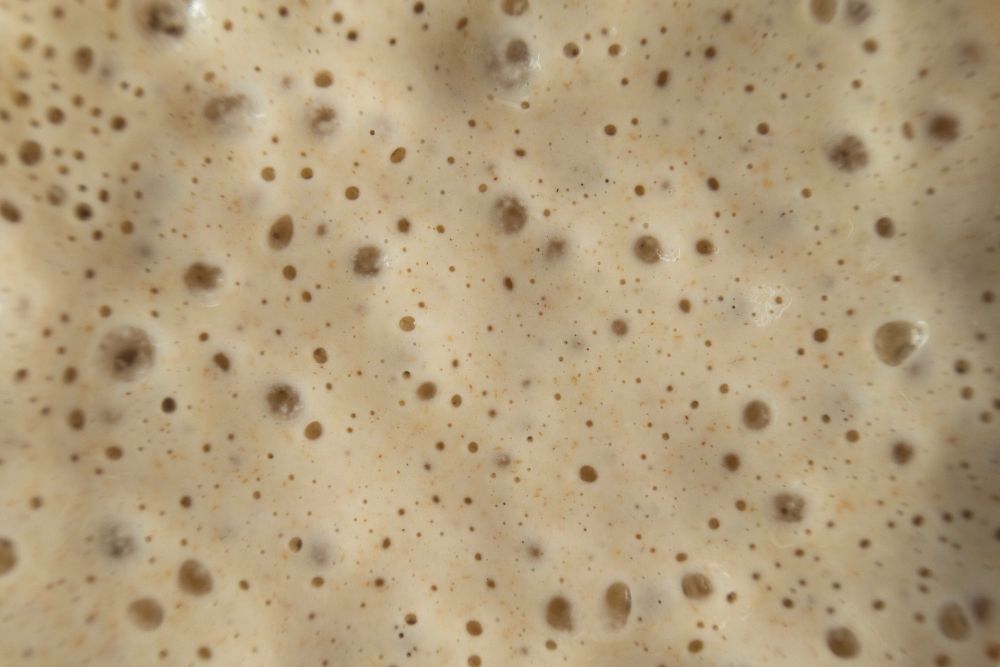
IS MY SOURDOUGH STARTER UNDERFED?
Feeding your starter a combination of flour and water encourages the yeast and bacteria to continue to do their jobs, resulting is a beautiful and effective sourdough starter.
Let me preface by saying underfeeding your starter also causes the LAB to enter in a viable but non-culturable (VBNC) state. The bacteria are still alive and metabolically active, but their altered state takes time to come back from. This is why it’s much harder to kill your starter than you think!
WHAT DOES AN UNDERFED STARTER LOOK LIKE?
Underfeeding your sourdough will produce one or more of these five common results:
1. MY SOURDOUGH STARTER SMELLS LIKE ALCOHOL
SMELL: NAIL POLISH REMOVER SMELL / SOUR SMELL / UNPLEASANT SMELL
PROBLEM: It’s not uncommon to smell a strong vinegar or acetone scent from your starter, especially if it’s been sitting at room temperature for a few days without being fed.
When the natural bacteria and yeast eat through the flour they begin to consume their own waste products, resulting in acetic acid. This produces the strong, unpleasant smell you might be experiencing.
Fear not, that smell won’t actually hurt you.
This starter is still safe to consume in “discard” recipes. Just be aware that it will likely result in a strong “sour” taste. Some recipes even call for a sour discard!
FIX: The best way to combat a vinegar/acetone scent from your starter is to feed it daily for the next 7 days (if you aren’t feeding regularly at room temperature already). Depending on your situation, the starter might even benefit from feeding in the morning and in the evening.
NOTE: Discard half of your starter before each feeding. This step isn’t necessary, but will eliminate having to use a large amount of flour and water each feeding. You can also use the discard in a recipe if so desired.
2. MY SOURDOUGH STARTER HAS A LAYER OF LIQUID ON THE TOP
APPEARANCE: BROWN OR BLACK LIQUID ON TOP OF YOUR SOURDOUGH STARTER
PROBLEM: Alongside a potentially strong, unpleasant smell from your jar, you might be experiencing a thin layer of clear, brown or black liquid on top of your starter. This is called “hooch” and is essentially a combination of alcohol and water that results from the natural fermentation process.

Hooch is different from a distinct water separation that may result in an underfed (or with a high liquid content) starter. Remember, you’re aiming for a thick pancake batter-like consistency when feeding your starter!
FIX: Hooch results when the natural bacteria and yeast eat through their available food. It is essentially “harmless” and can be mixed back into the starter at the next feeding. However, it is generally recommended to pour off the hooch and feed the starter like normal.
3. MY SOURDOUGH STARTER IS NOT RISING
TEXTURE: FLAT AND INACTIVE STARTER THAT ISN’T DOUBLE IN SIZE
PROBLEM: A flat and/or inactive starter could result from a handful of scenarios. I’d be as confident to say it’s likely because your starter is too cold. The natural bacteria and yeast thrive in a warm environment around 70-80°F.
Just like sticking food in the refrigerator, a cold environment is going to slow down any process.
FIX: It’s not uncommon for a flat or inactive starter to result from underfeeding either, however, the best indicator of an underfed starter is the smell.
NOTE: If your starter is not active, even after regular feedings, it’s time to reassess the situation. What flour are you using? What water are you using? Is the environment warm enough? Are you doubling the volume of flour to current starter in the jar? It may be time to consider a new starter.
4. MY SOURDOUGH LOAF IS FLAT
RESULTS: SOURDOUGH LOAF IS FLAT / DENSE / HARD
PROBLEM: The symbiotic relationship between the yeast and bacteria create the ever-so-desired bubbly sourdough starter; the cliche image we all see on the internet of healthy, active starter!
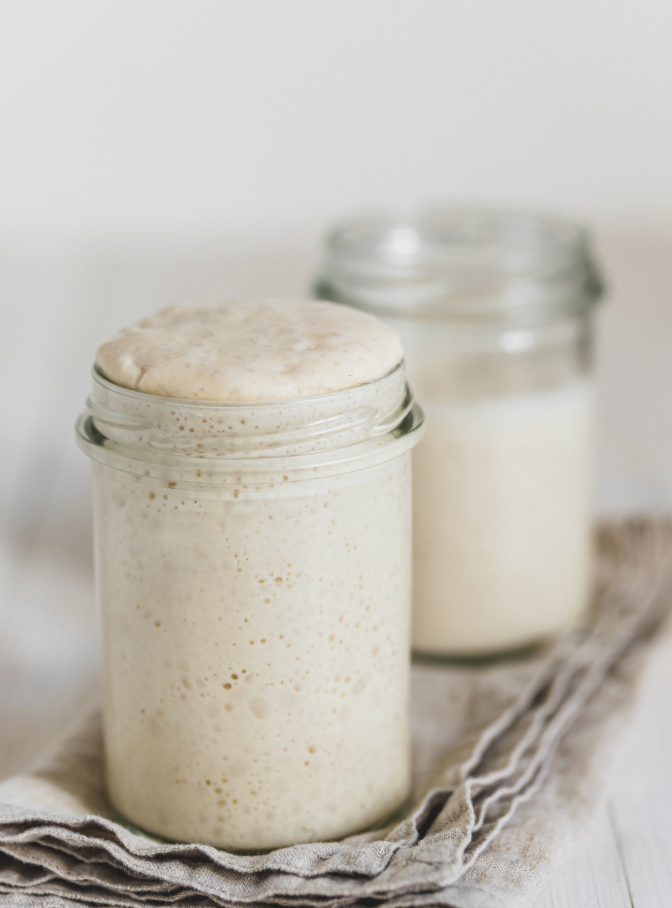
A healthy starter that receives regular feedings and produces tons of bubbles is the result of microorganisms doing their job and releasing carbon dioxide. Carbon dioxide is crucial for your loaf of sourdough to have the perfect crumb, a prominent ear and bouncy texture.
If you’re experiencing loaves of sourdough bread that are disc-shaped, dense, flat, hard, etc. you may have a bad sourdough starter. But don’t fear… it can be fixed without having to buy a new starter.
FIX: There are several situations to consider if your final loaf is as I described previously. It could be as simple as you just underproofed your bread. Meaning, it didn’t get enough time to proof.
The art of capturing wild yeast, forming the trending dough and allowing it to bulk ferment at the right temperature for the right amount of time takes practice and a lot of grace.
If you’re certain your dough has proofed correctly, but you’re still getting results of underproofed bread, it’s time to consider if you have a healthy starter or not.
5. MY SOURDOUGH STARTER HAS MOLD
MOLD: VISIBLE MOLD / KAHM YEAST / STRANGE TEXTURES ON TOP OF YOUR SOURDOUGH STARTER
The one word you don’t want to hear when talking about your sourdough starter… mold. It’s alarming to open your starter for a feeding to find you have a moldy sourdough starter.
What is mold?
Mold is a fungus; a living organism like other microorganisms in a starter, that thrives in humid environments.
Mold presents itself in more ways than one: fuzzy or velvety textures, fury patches of white or green, and even sometimes brown or cream. These molds found in your starter are definitely of concern. Consuming them would likely lead to some undesirable side effects.
The good news? Not every discovery of fuzzy, strange-textured contents in your starter is mold.
WHY IS THERE MOLD IN MY SOURDOUGH STARTER?
An underfed starter can become a breeding ground for mold. When the desirable, “good” yeast and LAB are weak and inactive, the “bad” bacteria in the starter is essentially given the upperhand.
Finding mold in your sourdough starter can be frustrating, but understanding what might be causing it is important in order to avoid mold growth in the future. Here is a list of potential mold-causing situations to consider:
If the mixing utensils or container your storing your starter in isn’t thoroughly clean, you’re running the risk of exposing your starter to other contaminants or mold. It’s important to be sure you’re cleaning these items with hot water and soap.
I’d also recommend boiling your regularly used wooden utensils every quarter or so to release trapped food particles or oils. Wood is porous which makes a typical hot water and soap cleaning not always the most efficient. However, boiling your wooden utensils also runs the risk of removing natural oils. Personally I use the opposite end of my Danish Dough Whisk (I use this to mix the dough and it’s a life saver!) but something like this Skinny Spurtle will do the job as well.
I recommend using a glass jar (I use Weck Tulip Jars; but any glass jar will do) as it’s easy to clean, doesn’t absorb anything and is clear, so you’re able to watch how your starter is performing without interrupting the process.
Finding yourself in this situation is very unlikely, though possible. If you’re sourdough starter is being stored in a humid, unclean environment you’re running the risk of exposing it to airborne mold spores or other contaminants that that can cause mold to form.
You might consider the room you’re storing the starter in or the general health of your home if this is your situation.
Contaminated flour can absolutely cause mold to grow in your sourdough starter. It’s important to consider the quality of flour you’re using when feeding your starter. Don’t feel like you have to buy the most expensive flour, but do find a good middle ground brand for great results. I like to use this King Arthur all purpose flour.
Always check for discoloration or signs of mold before using your flour. If you store flour in bulk, be sure to store them in a food-grade, airtight container like these ePackageSupply 5 Gallon Buckets.
It’s also important to note that the water you’re using should also be free of any signs of mold or the potential of mold spores. I use bottled spring water at the moment since we’re renovating our kitchen! But if you have filtered water or reverse osmosis water, you should be fine.
If you only have tap water, with no filtration option, fill a jar of tap water and allow it to sit at room temperature (covered with a cheese cloth to avoid any contamination) for a minimum of 24 hours. This is a strategy used to eliminate chlorine by evaporation, making your tap water “safe” to use with your sourdough starter.
I mentioned this earlier, but an underfed sourdough starter is significantly more likely to develop mold because of the weak environment that has been created. Every sourdough starter contains both “bad” and “good” bacteria. Surprised?
When a starter goes unfed for a long period of time, the environment becomes unstable and weak; it’s no longer acidic which naturally suppresses the bad bacteria. Essentially, an underfed starter creates an environment for “bad” bacteria to grow — aka, mold.
I bet you didn’t think this was a thing! Sourdough starter can actually become over fermented, meaning it has fermented for too long and the yeast have become too strong.
An over fermented starter will still rise and become bubbly, however it’s normally slightly runny and separated on the top of the bubbles, almost like a foamy consistency.
You might recognize different sourdough starter feeding recipes telling you to discard part of your starter before feeding it again. This is to prevent an over fermented starter, which can become a breeding ground for mold.
NOTE: Don’t feel like the starter you discard is unusable. This is the perfect time to use it in recipes like pancakes, tortillas, cookies, crackers, cinnamon rolls, etc.. Check out my blog post on 25 DELICIOUS Discard Recipes here!
If you’re using rye flour to feed your starter, you’ll naturally have a pink-hued undertone to your starter. However, if you’re not using rye flour and are still seeing pink in your starter, it’s a sure sign that you’re dealing with Serratia marcescens, which are an undesirable bacteria often found in pipes and tap water.
To avoid this, try using a spring or natural water to feed your starter. Filtered water or reverse osmosis could also provide as a better option here.
STRANGE TEXTURES IN STARTER THAT ARE NOT MOLD
KAHM YEAST
Kahm yeast can be quite frightening when found in your starter! But don’t fear… it won’t actually hurt you or your starter. It will just smell quite unpleasant!
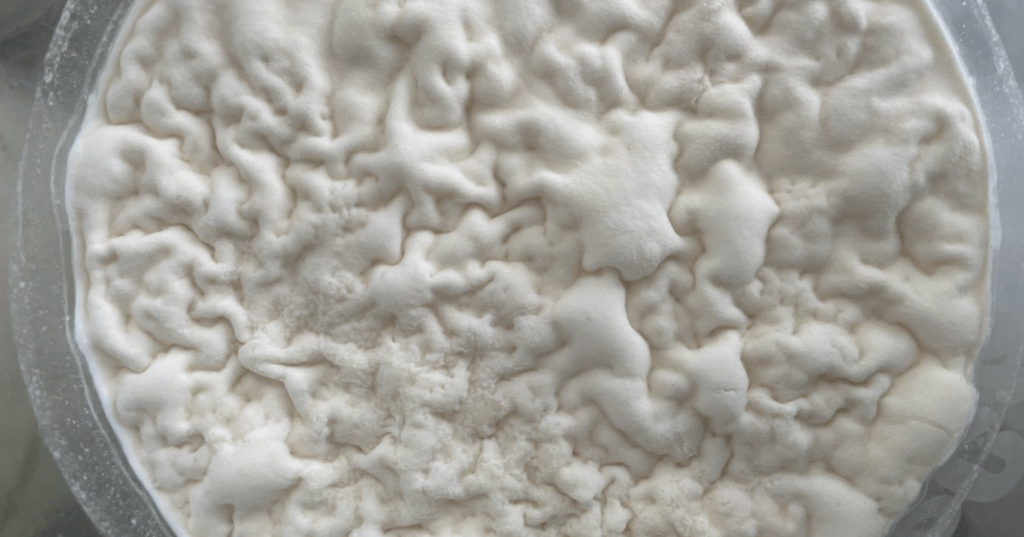
Kahm yeast looks white, powdery and strangely textured, and it sits on the top of your sourdough starter surface. It is a natural, wild yeast that has developed in your starter. Simple scrape it off the surface, discard part of your starter and feed it again.
HOW DO I FEED MY SOURDOUGH STARTER?
If you’ve follow The Heart Of Home for a period of time, you know I am quite loose on my feeding quantities. Personally, I double the volume of starter in the jar with King Arthur All Purpose or Bread Flour, then add just enough spring water until I reach a thick pancake consistency.
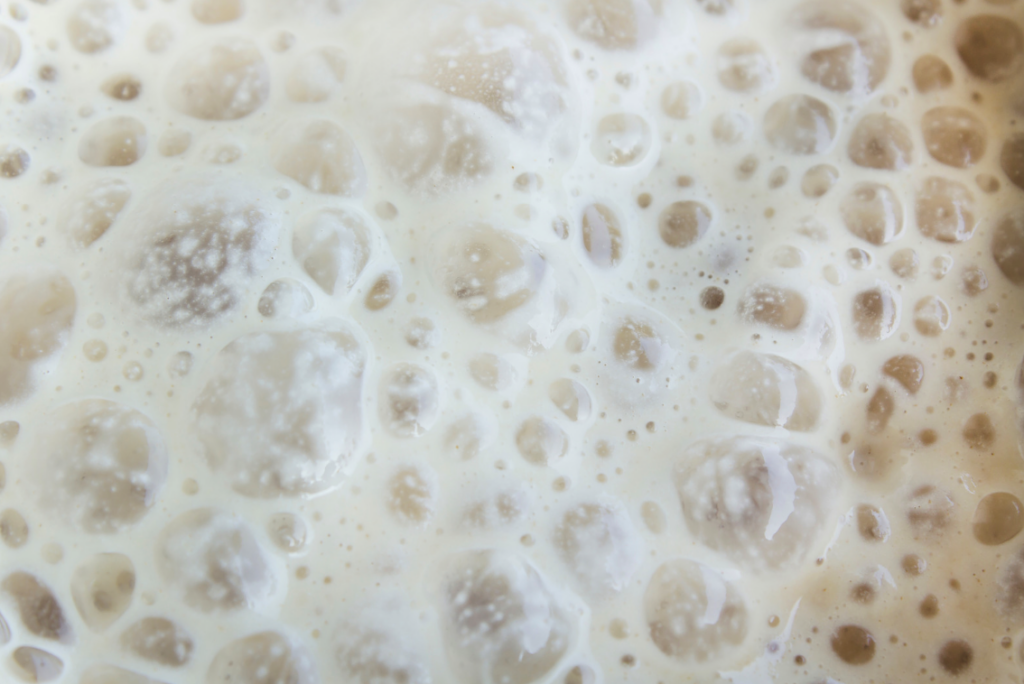
There are many recommendations when it comes to properly feeding your starter. What I see most commonly recommended is the 1:1 ratio of feeding (this is applicable with white flours). Meaning, for example, 50g of white all purpose flour and 50g of filtered water.
If you’re feeding your starter with rye or whole wheat flour, it’s recommended to do a 1:2 ratio. Meaning, for example, 50g of rye or what flour and 100g of filtered water.
Again, the consistency to aim for is a thick pancake batter.
WHAT DO I DO IF MY SOURDOUGH STARTER IS MOLDY?
In normal cases, it takes months for a starter to develop mold.
The safest option when suspicious of mold in your starter is to throw it out and start over. As disappointing as it might be, it’s the best thing for your health. That being said, diversify your sourdough starter portfolio.
I’m quite passionate about diversifying my food preservation portfolio, meaning to expand your preserved food from just pressure canned goods to a variety of items like ferments, dehydrated, frozen, etc..
Why?
In this instance, when disaster hits, having multiple areas of your starter stored eliminates the disappointment of having to throw your starter away. The threat of mold isn’t the only potential disaster either!
HOW DO I STORE SOURDOUGH STARTER?
It’s not uncommon for a glass jar to chip during a feeding or the three year old to knock it off the counter only to join the rest of the dust on the ground in glass shards. By expanding where your starter is stored (even if it means keeping two small jars!) you’re eliminating the chance of an accident from completely wiping out your access to sourdough starter.
I keep several starters. One on the counter for regular, daily use; one in the back of the fridge that I feed every couple weeks; an airtight bag of dehydrated sourdough starter; and a few cubes of frozen starter in an airtight bag in the freezer.
If you found this blog helpful, please share with a friend or two! Keeping your sourdough starter should not be difficult. And finding mold in your starter (or strange textures and unpleasant smells) shouldn’t be alarming!
Keep going, friend.
– Courtney
This post may contain affiliate links. Please read our full disclosure policy here.
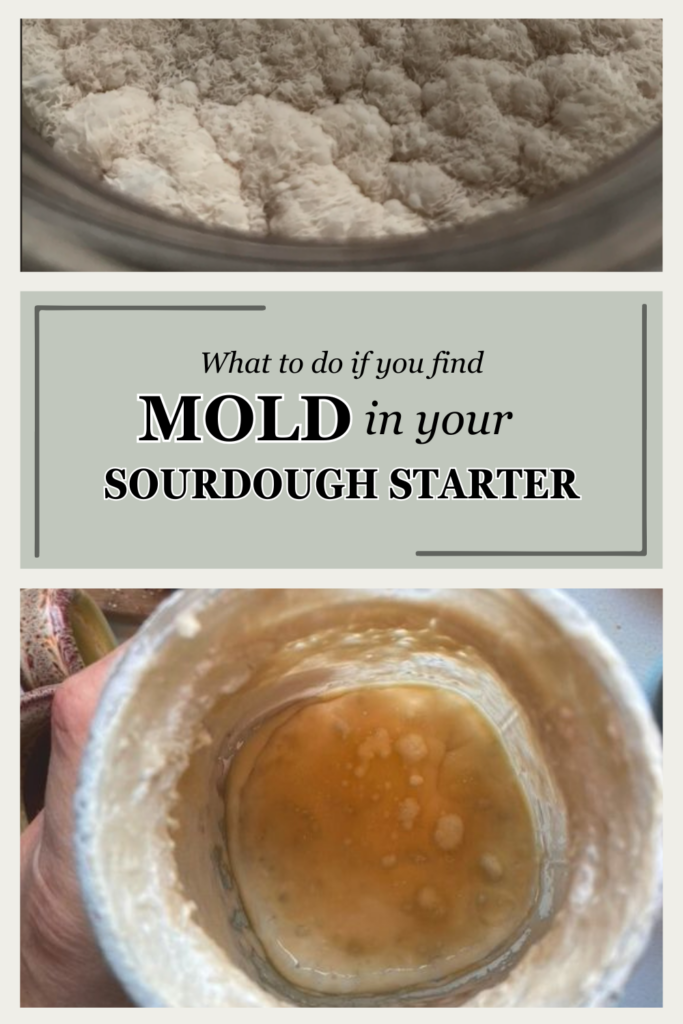
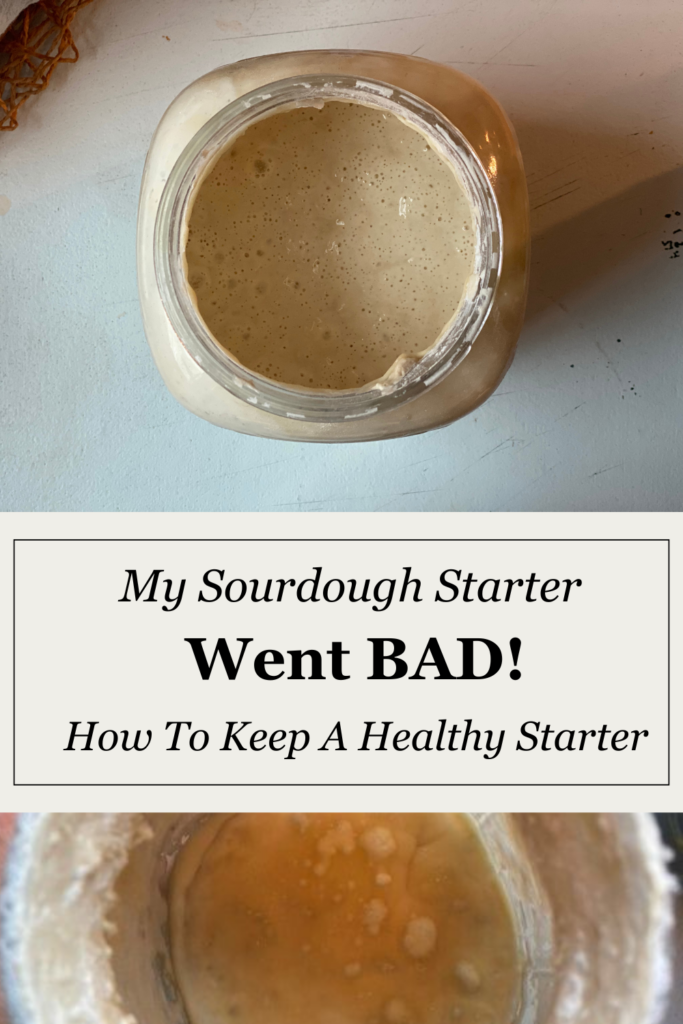
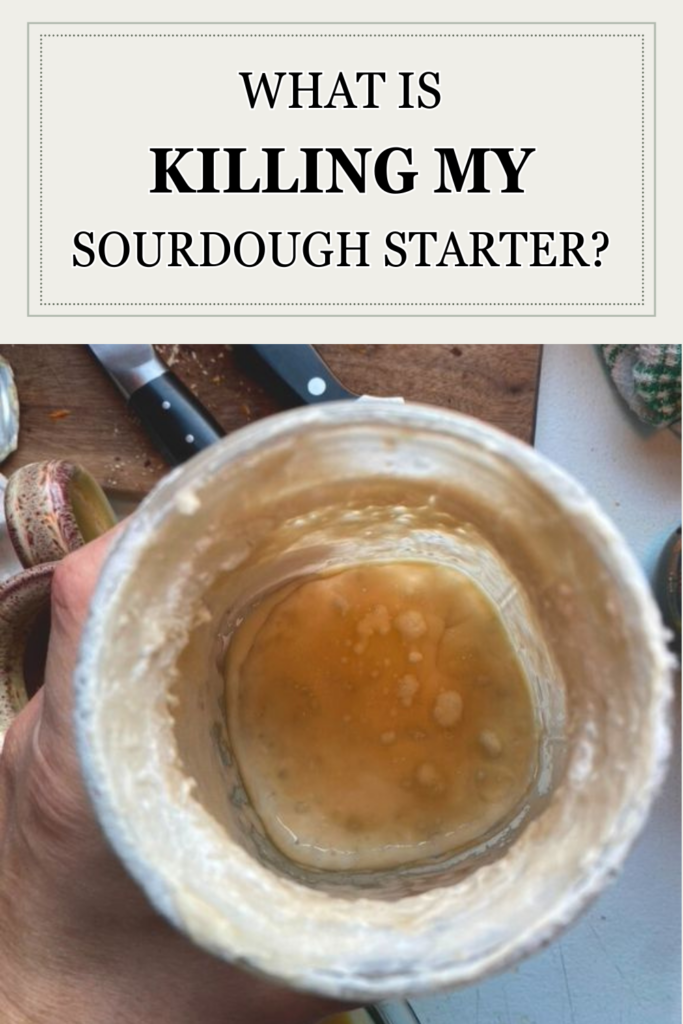
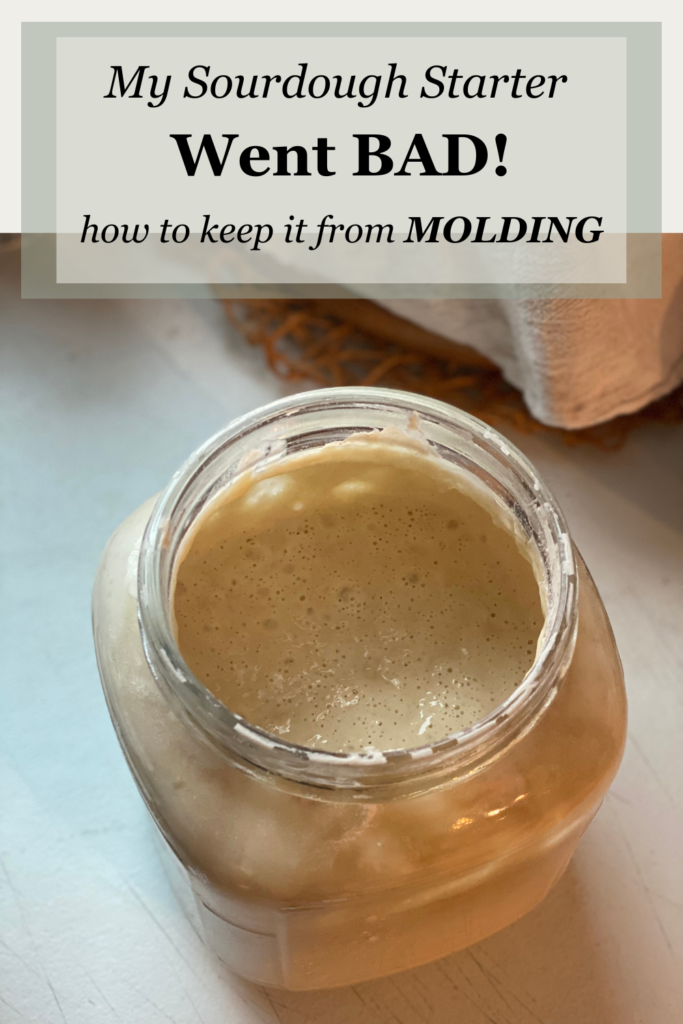
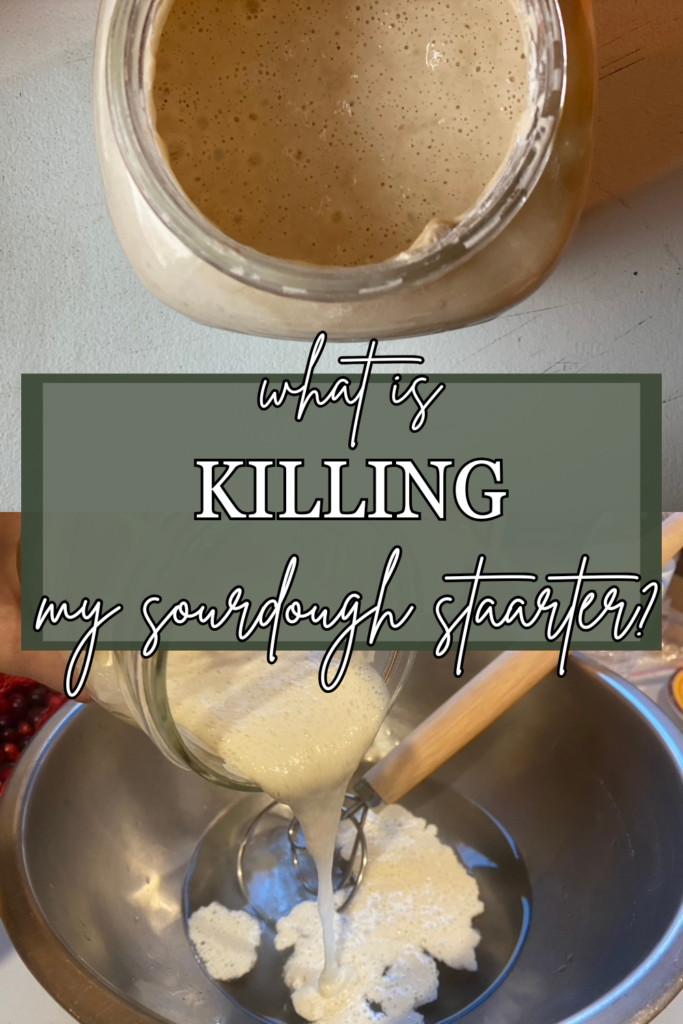
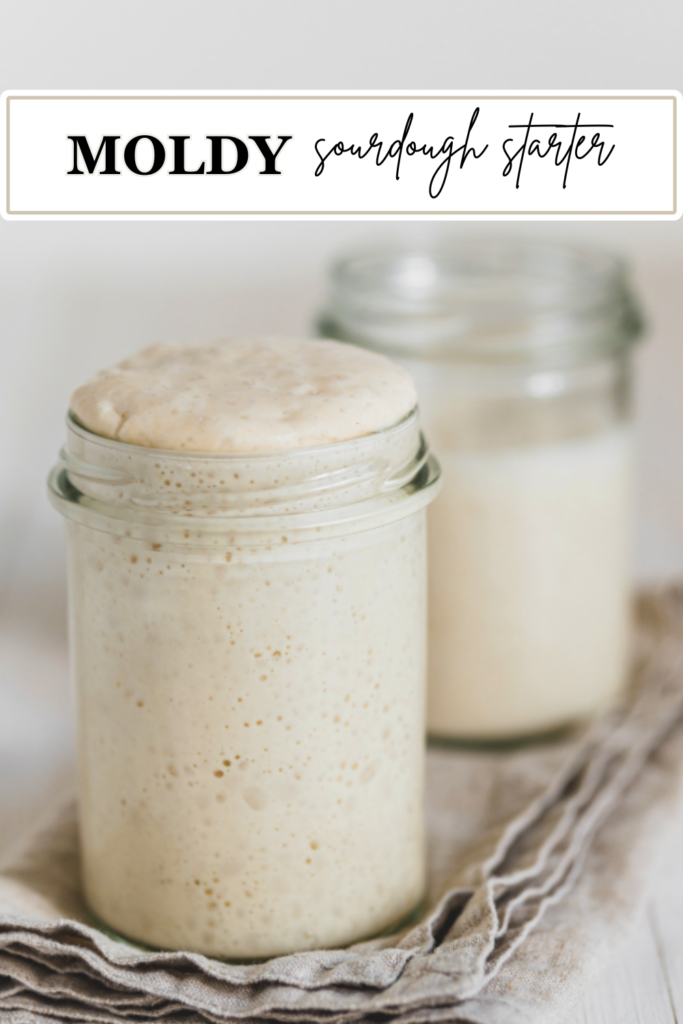
Do You Mind?
Hi, friend! If you found this blog post enlightening or helpful would you mind sharing it with others?
I’m on a mission to make sourdough less intimidating and more accessible to others who are ready to start their journey with healthier foods in their kitchen.
Can you help me with that?
This blog post can be shared on all social media platforms, email and Pinterest. Thank you so much!
Please let me know in the comments below if you found solutions to your sourdough questions in this post. I’d also love to know what other questions you might have. Leave them below and I’ll be sure to cover them soon!

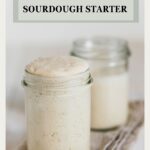

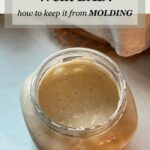
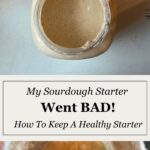
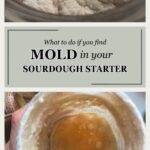

Leave a Reply